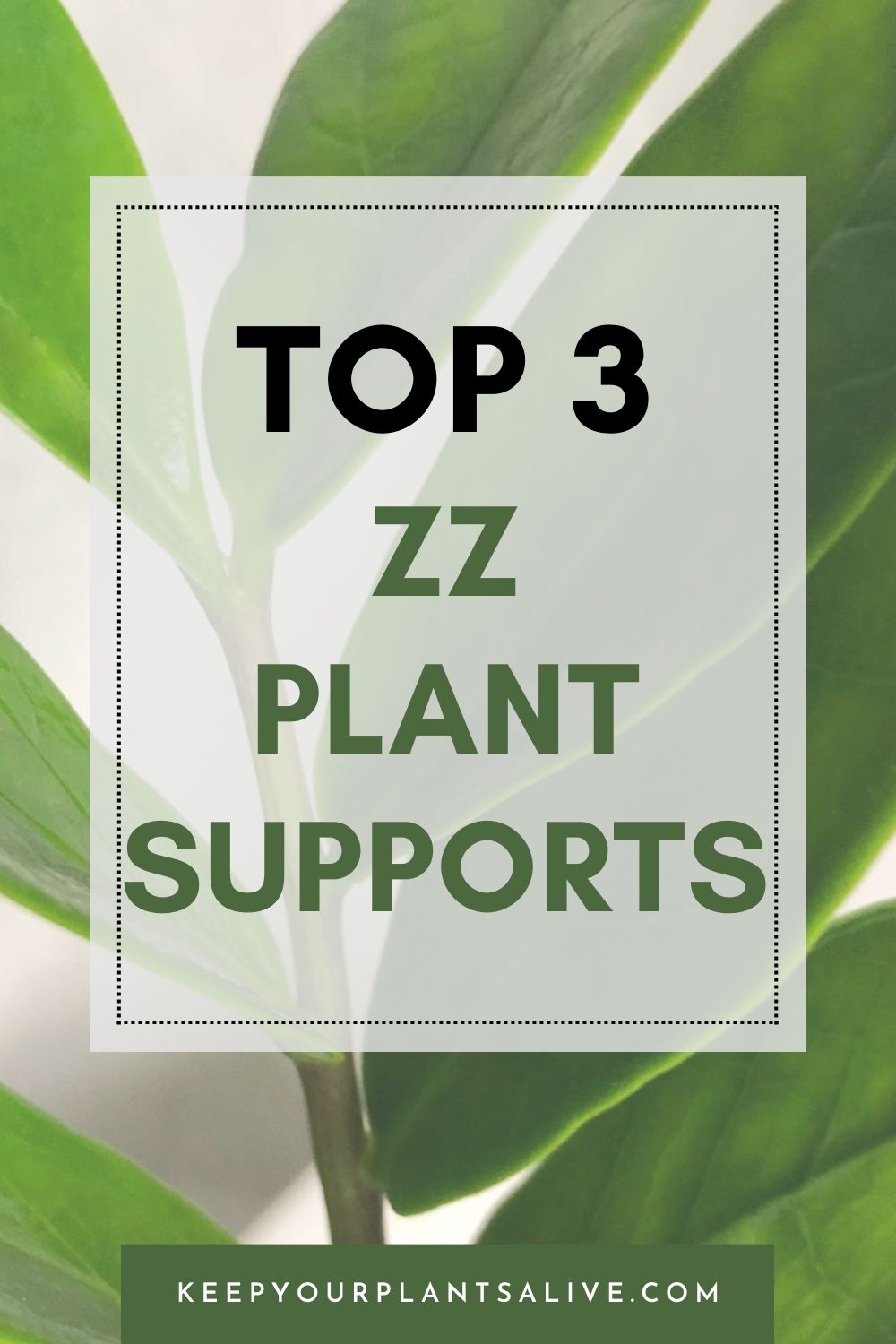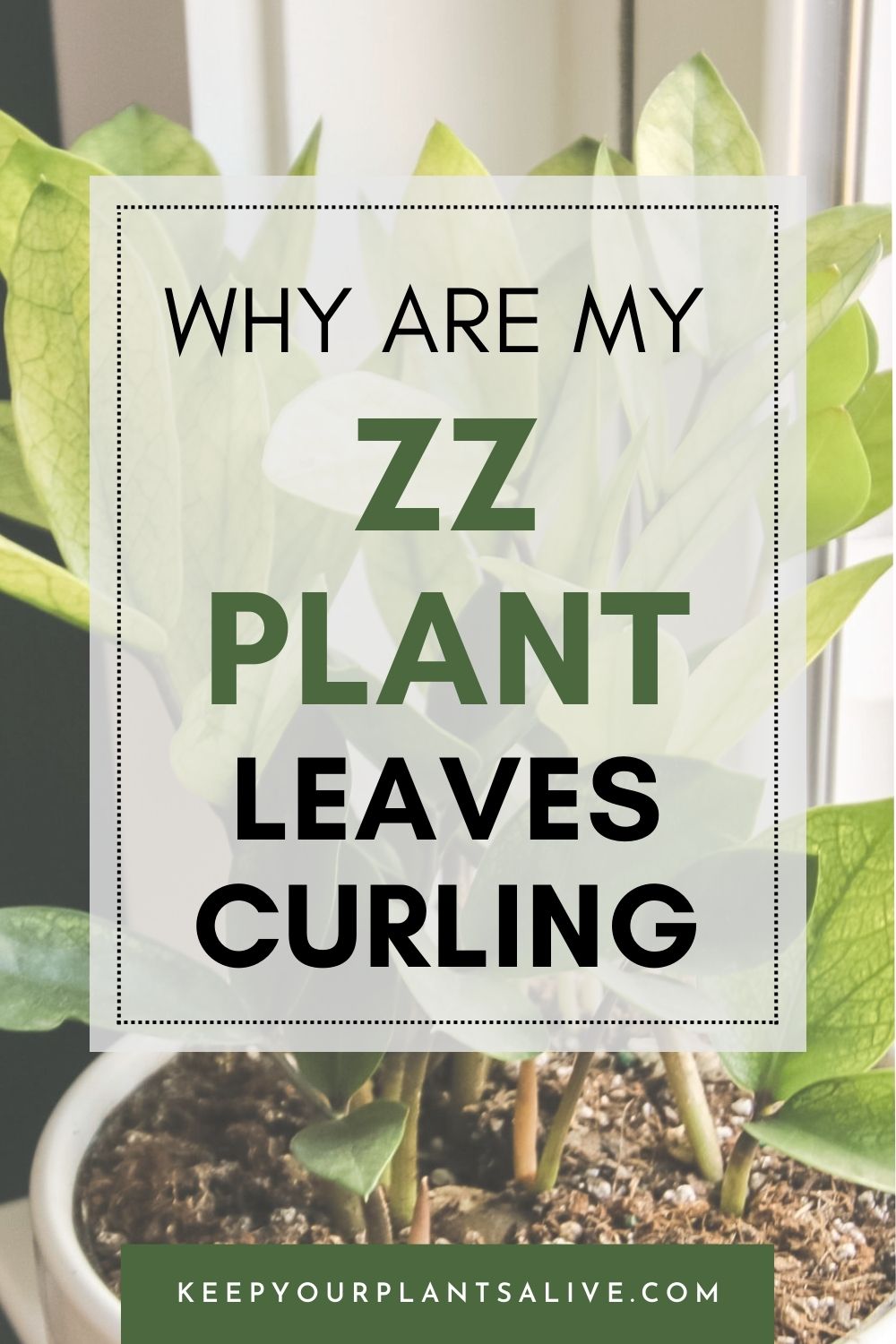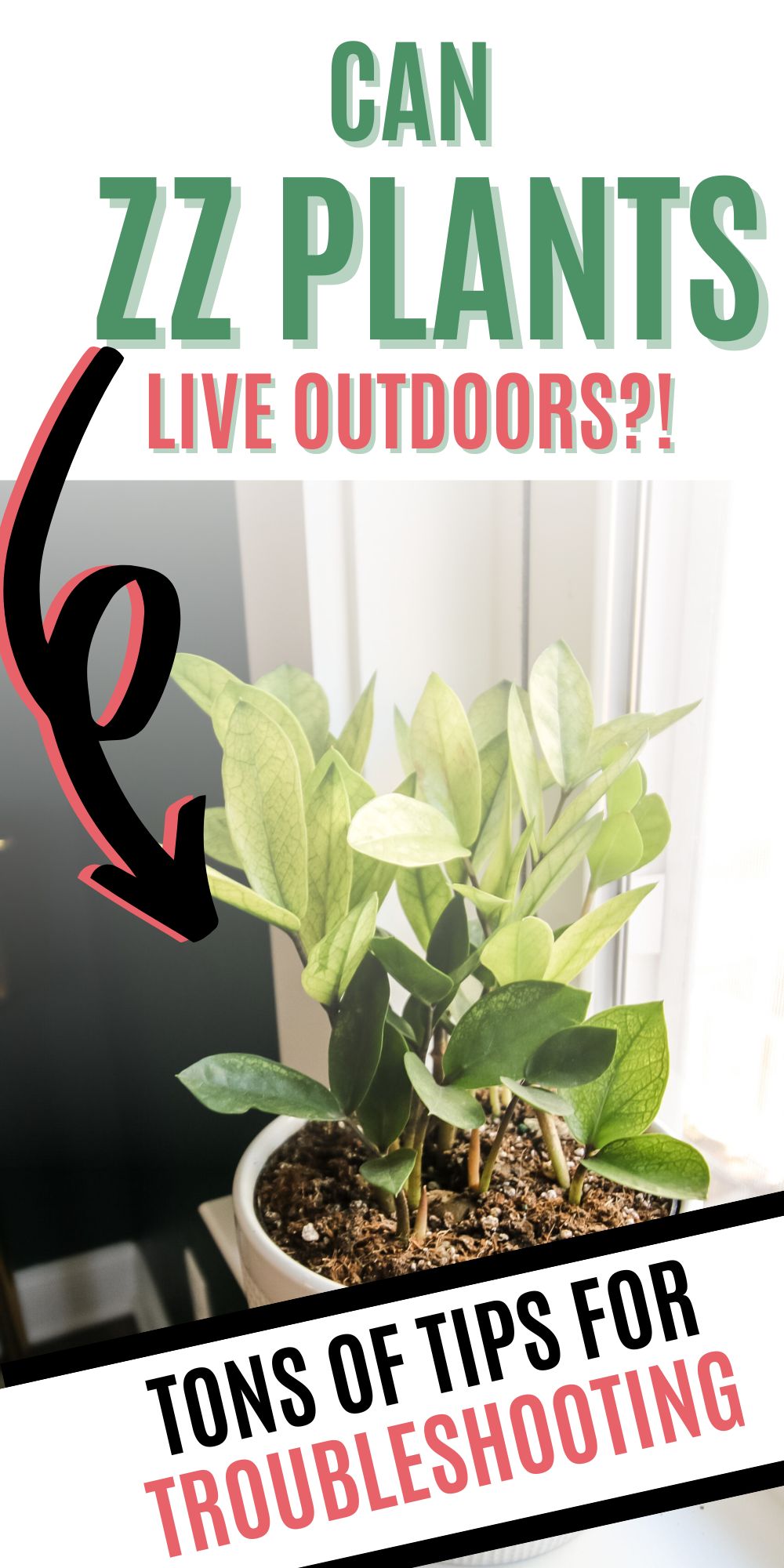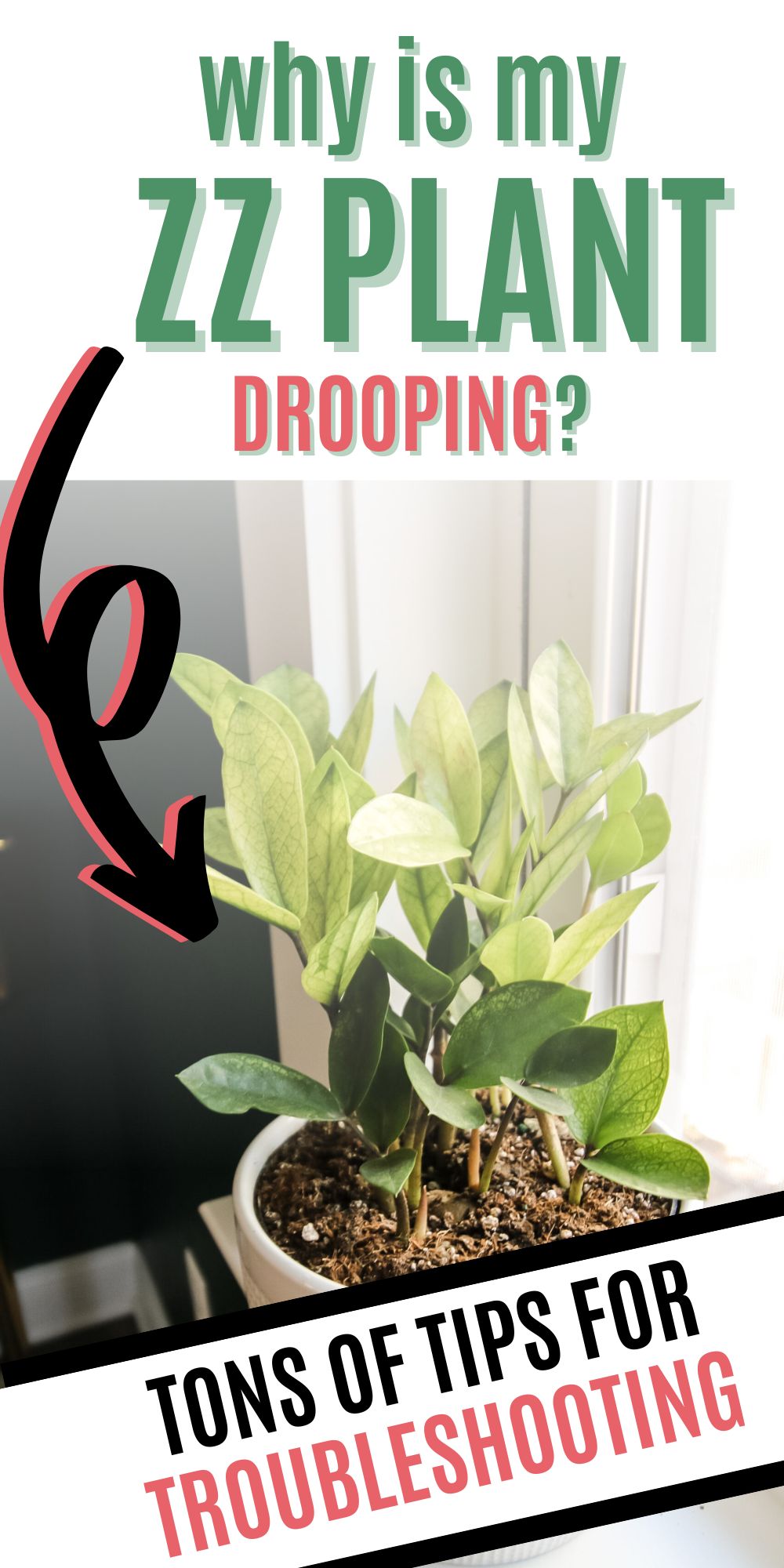Do you think that your ZZ Plant is dying? Here is how to know when your ZZ plant is dying and how to save it!
Although we love all kinds of plants, when newbies ask me for a houseplant suggestion I usually include the amazing ZZ plant!
This plant is generally considered easy to keep and maintain.
But after some time, you might notice small changes, and eventually, the ZZ doesn’t look the same as you got it, leaving you wondering what went wrong.
Unfortunately, these changes may signify that your ZZ plant is dying.
The good news is that you probably noticed them in time (if they are still in the initial stages), and you can save your dying ZZ plant.
Stay with us to find all the solutions you can use which will help restore your plant to its thriving form!
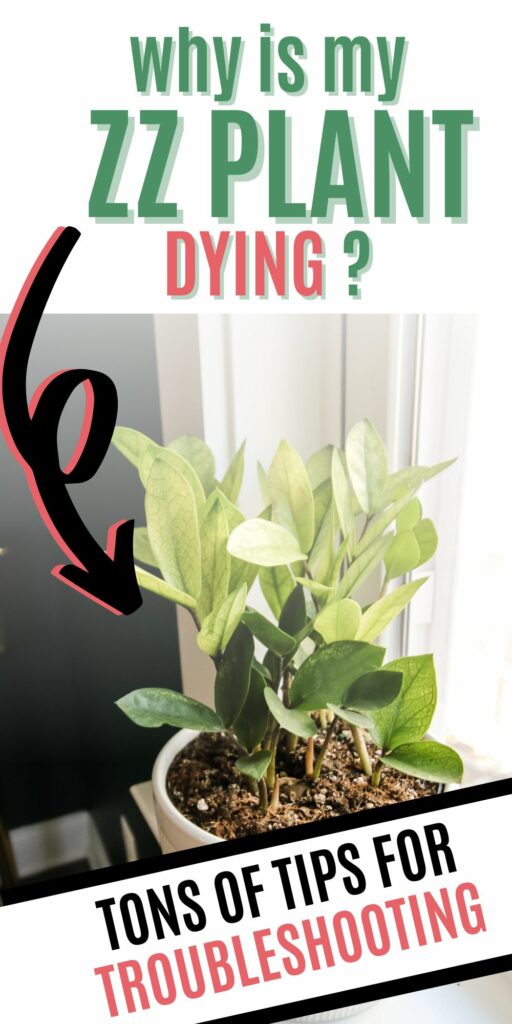
Want more ZZ plant topics?
- Raven ZZ plant care guide
- The Best ZZ Plant Soil
- Why is my ZZ plant getting yellow leaves?
- Why is my ZZ plant not growing?
- Why is my ZZ plant turning brown?
Free printable ZZ plant care guide
Join the (free!) KeepYourPlantsAlive+ community to access this exclusive printable plant care guide! Once you sign up, you can right click & save the JPG care guide. Or keep scrolling for more!
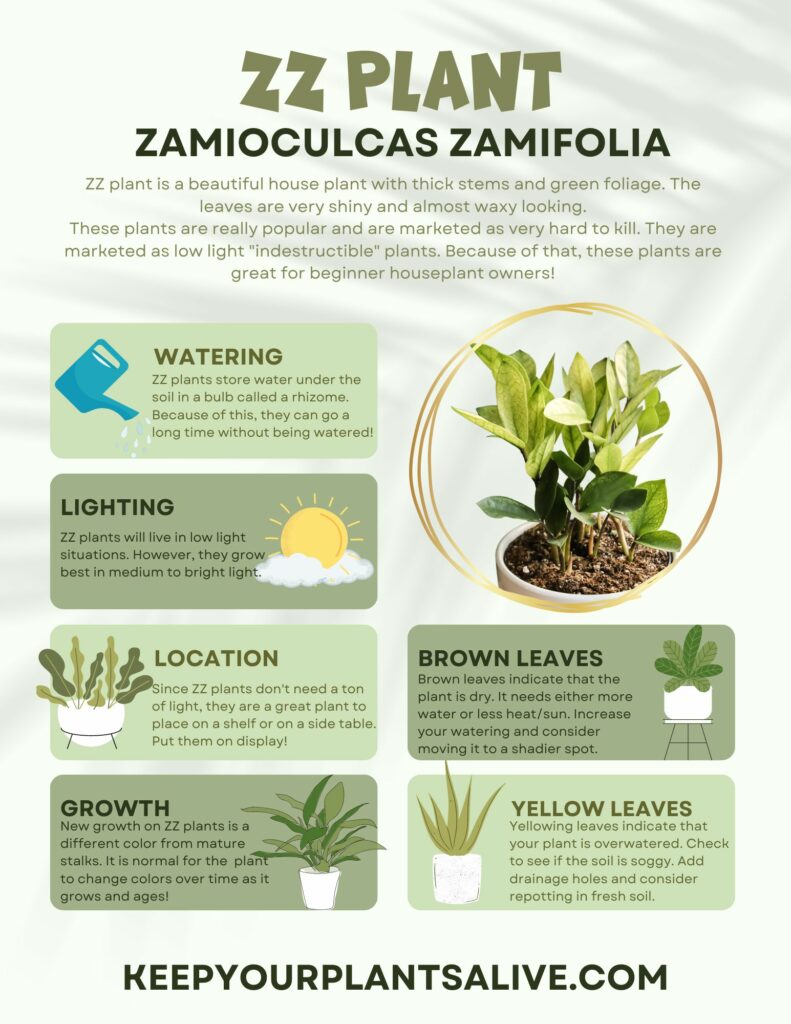
The ABCs of ZZ Plants
The unique name of this aroid plant comes from the full Latin name Zamioculcas Zamiifolia. In certain areas, you can find it under the name Zamia.
It grows natively in parts of tropical East Africa. Since it is adapted to a tropical climate, it is drought tolerant and does not require frequent watering.
It is even recommended to water only once a month!
Otherwise, the ZZ plant is entirely poisonous, from the leaves to the berries, so it may not be the best option to be within reach of small children and pets.
In terms of exposure to light, it prefers indirect moderate light; that is, it belongs to the category of plants that like partial sun.
It is not readily susceptible to pests and can last up to 2 weeks without care. You will definitely be able to enjoy somewhere on the beach without thinking about your ZZ plant.
After reading all this, you may wonder what could have possibly led to your ZZ plant dying.
Some reasons may be too frequent watering, exposure to direct light, or poor drainage that retains excess water.
Anyway, keep reading and discover the most common causes and easy solutions.

Signs Your ZZ Plant is Dying
Some of the most common. signs that your ZZ plant is dying includes:
- leaf drop
- leaf scorch
- yellowing leaves
- brown leaves
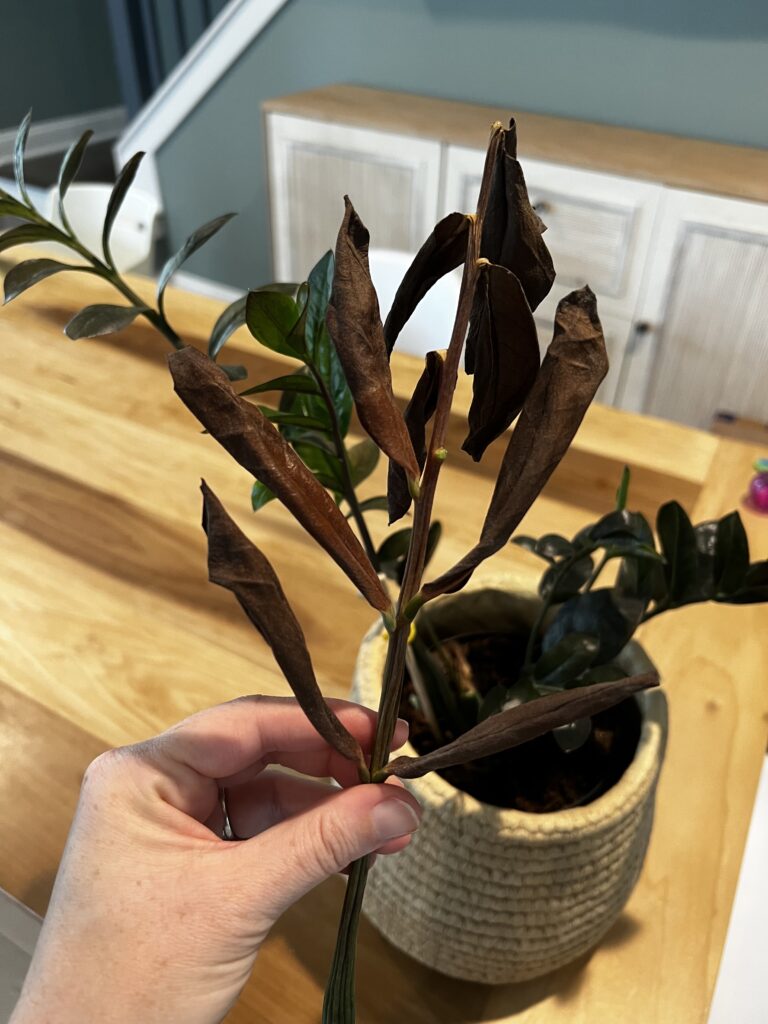
Leaves Begin to Droop
Suppose you notice that your plant's foliage has lost its glaze or become thinner (the leaves are naturally thick like succulents).
In that case, there is a high possibility that leaves will fall and drop.
The most common reason for ZZ plants dropping is the low humidity in the room. Maintain humidity at 40-50%, but be careful not to set it too high as it will attract insects like gnats.
Another reason is under-watering, which you can spot from a droopy ZZ plant.
You know it should be watered rarely, so you completely forgot about it. Next time, set a reminder.
Poor watering can also result from poor drainage, so water runs out quickly and stays at the bottom.
Check it the next time you water. If the water settles down immediately, it's time to improve drainage.
Understanding Leaf Scorches on Your ZZ Plant
Leaf scorches can be another reason why your ZZ plant is dying. One main cause contributes to this – intense sun exposure and direct light.
ZZ plants require indirect light, so the ideal location is to place it near a north or east-facing window.
Overfertilization
Although unexpected, overfertilization is another cause of dying ZZ plants. These green beauties don’t like to be fed too often. Do it only once a year when it starts to put out more stems.
If you fertilize your plant and within 1-2 weeks it suddenly starts getting lots of yellow leaves, it is likely over fertilized.
If you have already overfed, you should consider replanting it. Remove all the soil, especially any pieces of visible fertilizer, and repot in fresh soil.
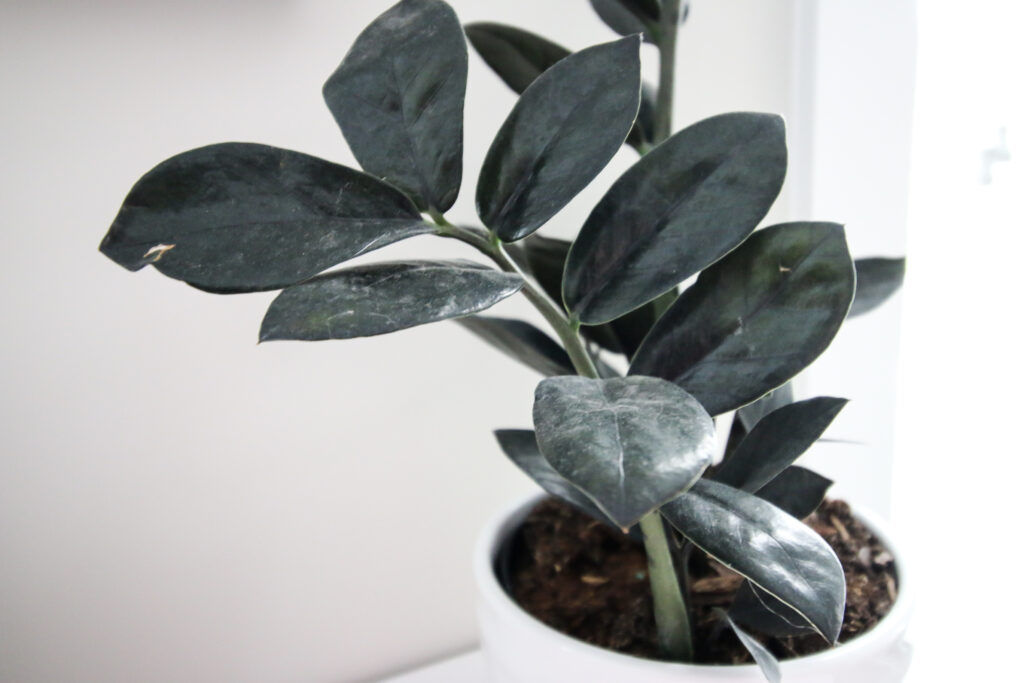
Yellowing Leaves
ZZ plants typically have dark green leaves. But what if they start to turn yellow? How can we prevent this?
First, let's look at the reasons. As expected, overwatering is the main perpetrator as it can lead to ZZ plant wilting and rotting.
Maybe you put the optimal amount of water, but it is retained due to poor drainage. Check if your pot has drainage holes in the bottom.
Also, pay attention to the temperature in the room. The ideal temperature for your plant is 65°F - 75°F (18°C to 24°C), i.e., room temperature. Because it is tropical, it can withstand up to 90°F (32°C) but not more than 1 week.
Why Do Leaves Turn Brown?
You have noticed brown spots, or the leaves have become dry and brown. What type of water do you use for watering your plants?
This problem can occur using tap water rich in chlorine and fluoride.
The best alternative is to use rainwater or let tap water stand for at least 24 hours in the open air to lose fluoride and chlorine. These chemical elements cause dryness and slow down the absorption of nutrients.
Brown leaves, which are an indicator of a ZZ plant dying, can also occur due to low humidity and direct sun exposure, but you already know how to tackle these issues.
Also, pay attention to the temperature, as too much heat - or not enough of it - can also lead to death.
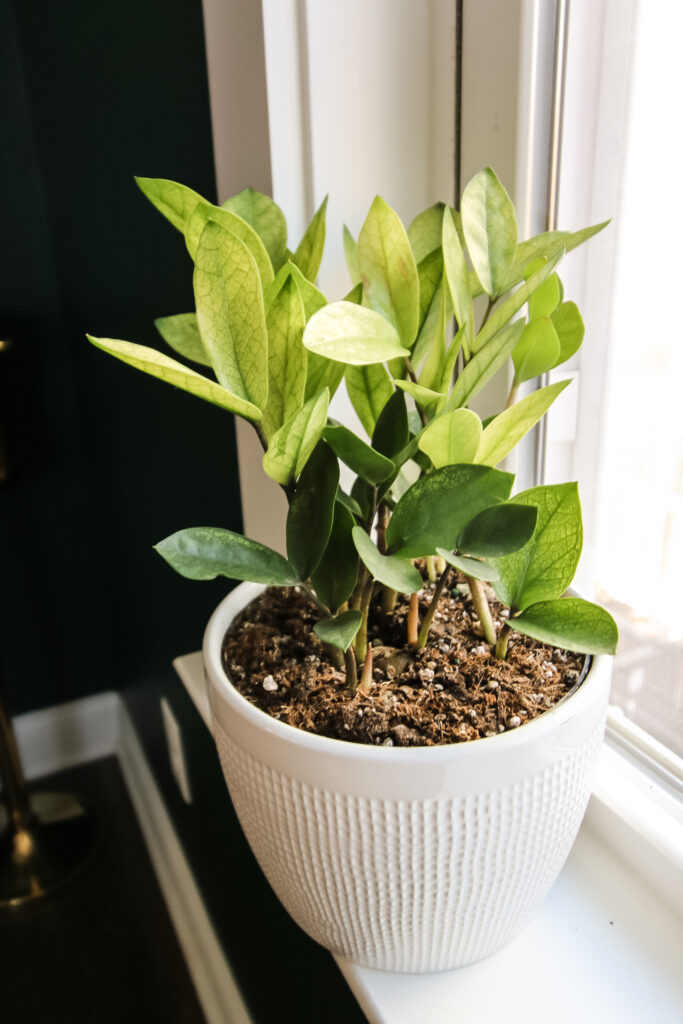
How to revive a dying ZZ plant?
Even though they’re low maintenance, a dying ZZ plant is common, so don’t start questioning your plant care skills.
You just need to adjust your care, and these universal tips will surely benefit you!
For one, maintain a humidity level of 40-50 %, move the pot near a north window, keep room temperature, and do not fertilize too often.
Don't forget about the soil - make drainage holes at the bottom of the pot and add components for aeration. Cut the dead parts with a sterile scalpel, and put cinnamon in place.
Furthermore, replanting should only be done if you have kept the plant overwatered or overfertilized for too long or if the soil is old.
If you fear the drainage is unsatisfactory, replant the ZZ completely. Prepare 60% soil, 30% perlite, and 10% other substances (peat moss, coconut coir, orchid bark, sand). Mix it together and plant your ZZ plant after cutting the dead parts.
The most important thing is recognizing that your plant wants to tell you something - that’s the only way to prevent the ZZ plant from dying!
It may require adaptation to temperature, humidity, or sun exposure, or a total transformation of the drainage. Although ZZs are easy to grow, you should be observant as ever. Don’t forget to shower it with love!
Any more questions about your ZZ plant?
Thanks for reading!


Hey there, I'm Morgan, a houseplant enthusiast from sunny Charleston, South Carolina. Growing up surrounded by my mom's lush orchids and African violets, I discovered the magic of bringing nature indoors. Thanks to the pandemic, I delved deeper into houseplants, discovering their power to uplift moods and transform spaces. I'm here to spill all my secrets, helping you pick the perfect houseplant - and make it happy. Let's keep your plants alive, together! 😊

